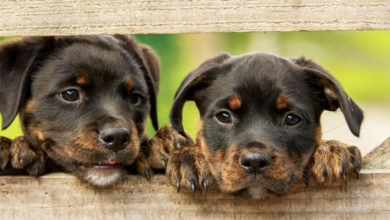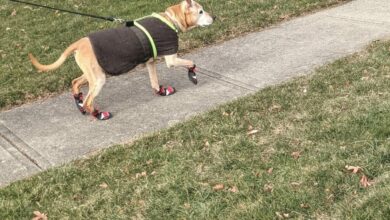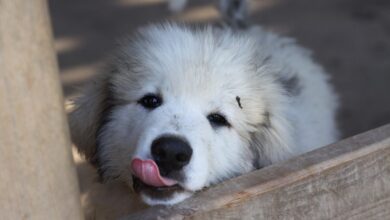20 Fun & Fascinating Facts About Pekingese Puppies

Pekingese dogs, with their luxurious manes and dignified demeanor, exude an aura of royalty. With roots entrenched deep within ancient Chinese history, this breed has fascinated and charmed dog lovers worldwide. Dive into the world of Pekingese puppies and discover 20 intriguing facts that showcase their unique nature.
1. Pekingese puppies trace their roots to ancient Chinese royalty.
Historically, the Pekingese were exclusive companions to the Chinese imperial family. Legends state that they were created by Buddha, who shrunk a lion down to dog size without diminishing its noble character. Their regal lineage is evident in their confident demeanor and distinctive appearance.
2. They get their name from the ancient city of Peking (now Beijing).
The name “Pekingese” is derived from “Peking,” the former name for Beijing, the capital city of China. This association further emphasizes their ancient Chinese roots and the central role they played in the country’s history.
3. Pekingese have a characteristic “rolling” gait.
When they walk, Pekingese puppies display a distinctive, slow, and rolling gait. This specific manner of movement stems from their unique skeletal structure, particularly their wide-set forelegs which give them a proud and deliberate stride.
4. Their double coat is both beautiful and functional.
Pekingese puppies boast a double coat – a soft, dense undercoat and a long, straight outer coat. Historically, this thick fur protected them from the cold in the Chinese winters. While it adds to their regal appearance, it also requires regular grooming.
5. They have a distinct “lion’s mane.”
Often referred to as the “Lion Dog,” the Pekingese’s mane, especially around their neck and shoulders, gives them a leonine appearance. This characteristic feature not only enhances their royal image but also has historical significance, given the lion’s importance in Chinese culture.
6. Pekingese are known for their brave and loyal nature.
Despite their small size, Pekingese puppies are fearless and loyal. They are known to be protective of their owners, often displaying courage that belies their stature. This bravery is a testament to their historical role as palace guardians.
7. Their flat face is a defining feature.
The Pekingese’s brachycephalic (flat-faced) structure gives them their unique appearance. This feature, while endearing, also means potential respiratory challenges, so it’s essential to ensure they don’t overexert themselves, especially in hot conditions.
8. They are not big barkers but will alert when necessary.
Pekingese are typically quiet dogs. However, their history as palace watchdogs means they won’t hesitate to alert their owners to unfamiliar noises or strangers, showcasing their protective nature.
9. Pekingese puppies thrive on human companionship.
These dogs are known for their affectionate nature and form strong bonds with their families. While they can be independent at times, they deeply cherish moments spent with their human companions, whether it’s cuddling or playing.
10. Early socialization benefits their temperament.
While naturally good-natured, exposing Pekingese puppies to different environments, people, and experiences early on ensures a well-rounded and sociable adult dog. This helps reduce any potential for timid or aggressive behaviors.
11. They have a penchant for being stubborn.
Training a Pekingese puppy might require some patience. Their royal lineage can sometimes translate into a stubborn streak. Positive reinforcement and consistent training methods are key to guiding their behavior.
12. Pekingese are well-suited for apartment living.
Given their small size and moderate activity level, Pekingese adapt well to apartment living. While they do appreciate short walks and play sessions, they’re also content lounging indoors with their loved ones.
13. Their eyes are expressive and captivating.
One of the most striking features of the Pekingese is their large, round, and dark eyes. These eyes are not only captivating but also incredibly expressive, often giving owners a clear window into their emotions.
14. They have a rich history intertwined with Chinese folklore.
Beyond historical accounts, various Chinese legends and tales feature the Pekingese. Their presence in folklore further emphasizes their significance and charm within ancient Chinese culture.
15. They require regular grooming to maintain their majestic appearance.
With their luxurious double coat, regular grooming is essential. Brushing several times a week prevents matting and tangling, ensuring the Pekingese puppy maintains its regal and pristine look.
16. Pekingese are generally long-lived.
With proper care and attention, the Pekingese breed can enjoy a long lifespan, often ranging from 12 to 15 years. Regular veterinary check-ups and a balanced diet contribute to their longevity.
17. They have a low tolerance for heat.
Due to their thick coat and brachycephalic structure, Pekingese can be sensitive to high temperatures. During hot weather, it’s essential to provide them with a cool environment and avoid strenuous activities.
18. Their compact size hides a robust physique.
While they may appear delicate, Pekingese puppies have a sturdy and muscular build. Their strong body is a testament to their history as palace guardians, ready to face any challenges.
19. They are often described as “cat-like.”
Many Pekingese owners note their cat-like behaviors. Whether it’s their independent streak, the manner in which they groom themselves, or their preference for high perches, these dogs showcase characteristics reminiscent of feline friends.
20. Their affectionate nature makes them excellent therapy dogs.
Given their calm demeanor and love for human interaction, Pekingese can serve as wonderful therapy dogs. Their presence can provide comfort and emotional support to those in need.
Conclusion
Pekingese puppies, with their deep historical roots and captivating features, are truly a breed like no other. Their blend of regality, loyalty, and affection has solidified their place in the hearts of many. As we journey through these facts, it’s evident that the allure of the Pekingese is timeless, spanning centuries and captivating generations.
Frequently Asked Questions About Pekingese Puppies

1. What is the average lifespan of a Pekingese?
Pekingese dogs, with proper care, typically live between 12 to 15 years. Their longevity can be attributed to a balanced diet, regular veterinary check-ups, and a loving environment. As with all breeds, individual health and genetics can influence lifespan.
2. Are Pekingese good with children and other pets?
Pekingese can be good with children, especially if socialized early. However, due to their small size, children should be taught to handle them gently. They can also get along with other pets, but introductions should be made cautiously to ensure compatibility.
3. How often should I groom my Pekingese?
With their thick double coat, Pekingese require regular grooming. It’s recommended to brush them several times a week to prevent matting and tangling. Additionally, routine eye, ear, and dental care are essential for their overall health.
4. Are Pekingese dogs adaptable to apartment living?
Yes, Pekingese are well-suited for apartment living due to their small size and moderate activity level. While they enjoy short walks and play sessions, they’re also content with indoor activities and lounging with their families.
5. What health issues are commonly associated with the Pekingese breed?
Pekingese can be prone to certain health challenges like brachycephalic syndrome due to their flat face, as well as issues like progressive retinal atrophy, patellar luxation, and heart problems. Regular veterinary check-ups can help identify and manage potential health concerns.
6. Are Pekingese easy to train?
Pekingese are intelligent, but they can also exhibit a stubborn streak. Consistent, positive reinforcement training methods work best. Early socialization and puppy training classes can also benefit their overall temperament.
7. Do Pekingese require a lot of exercise?
While Pekingese are not highly active, they still require regular exercise to maintain their health. Daily short walks combined with play sessions can suffice their activity needs. They also enjoy interactive toys and games.
8. How did the Pekingese breed get its name?
The Pekingese breed is named after the ancient city of Peking, which is now known as Beijing, China’s capital. Their association with this city underscores their historical significance and connection to Chinese royalty.
9. Can Pekingese tolerate hot weather?
Due to their brachycephalic structure and thick coat, Pekingese have a low tolerance for heat. It’s important to avoid walking them during the hottest parts of the day and ensure they have a cool, shaded environment during warm weather.
10. What should I feed my Pekingese puppy?
It’s essential to provide a balanced diet suitable for their age, size, and activity level. High-quality commercial or home-cooked food, vet-approved, can ensure they receive all necessary nutrients. Regular feeding guidelines and monitoring their weight can help maintain optimal health.




